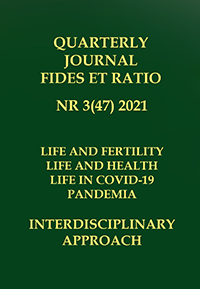Abstract
In the face of the multiplication of images in all spheres of human life, it is necessary to discuss the need to develop visual education, the purpose of which is to prepare people to read visual messages in the conditions of a changing culture. For the needs of the research challenge, the source of which was the global crisis caused by the Covid 19 pandemic, the subject of scientific interest was defined, which are the conditions for reading covid 19 visual messages located in public urban spaces. The article presents a fragment of a wider research. Due to the carrier of the visual message used, the analysis was based on photos presenting Covid 19 visual messages, obtained from cities in New Zealand, China and Kenya. It has been adopted that the critical theory and visual culture focused on the message can mutually support each other with the traditions of their discourses in the descriptions of the analyzed phenomena. For the purposes of the research, the theory of visual communication by P.M. Lester was adopted, taking into account six perspectives of knowledge: 1) historical, 2) personal, ethical, 4) cultural, 5) technical and 6) critical.
References
Aiello, G. & Parry, K. (2019). Visual Communication: Understanding Images in Media Culture, SAGE Publication.
Althusser, L. (2014). On The Reproduction Of Capitalism. Ideology And Ideological State Apparatuses, Brooklyn: Verso Books.
Ashman, A. (2018). (ed). Education for inclusion and diversity, London: Pearson Education. Doucet, A. Netolicky, D. Timmers K., Tuscano F.J. (2020). Thinking about Pedagogy in an Unfolding Pandemic: An Independent Report on Approaches to Distance Learning During COVID19 School Closures, Independent Report written to inform the work of Education International and UNESCO. Retrieved May 16, 2021, from: https://issuu.com/educationinternational/docs/2020_research_covid-19_eng?fr=sZGI5NjExMTA3MjU&fbclid=IwAR0yVYTfKBdL4vOvQtPaSO7Jbf2rCnX DllFk-8Lkh1qA-5FzScG7ZIZyMx0.
Barnes, S.B. (2017). Inroduction to Visual Communication, New York: Peter Lang Publishing Inc.
Belting, H. (2014). An Anthropology of Images: Picture, Medium, Body, Princeton: Princeton University Press.
Bruner, J.S. (1996). Cuture of Education, Cambridge: Harvard University Press.
Czerepaniak-Walczak M. (2020) Respect for the Right to Education in the COVID-19 Pandemic Time. Towards Reimagining Education and Reimagining Ways of Respecting the Right to Education, The New Educational Review, Vol. 62.
Dylak, S. (2012). Alfabetyzacja wizualna jako kompetencja współczesnego człowieka, (in:) W. Skrzydlewski, S. Dylak (eds.), Media. Edukacja. Kultura. W stronę edukacji medialnej, Poznań-Rzeszów: Polskie Towarzystwo Technologii i Mediów Edukacyjnych.
Dhawan, S. (2020), Online learning: A panacea in the time of COVID-19 crises, Journal of Educational Technology, 49 (1), 5–22.
Foucault, M. (2017). Discipline and Punish, London: Allen Lane. Foucault, F. (2020). Power, London: Penguin Books.
Freedberg, D. (2021). Iconoclasm, Chicago: University of Chicago Press.
Freenberg, A. (2010). Between Reason and Experience: Essays in Technology and Modernity, Cambridge, MA: MIT Press.
Fuller, S. (2018). Post-truth: Knowledge as power game, London: Anthem Pres.
Habermas, J. (2002). Teoria działania komunikacyjnego, Tom, 2, Warszawa: Wydawnictwo PWN.
Hausken, L. (2013). (ed). Thinking Media Aesthetics. Media studies, film studies and the arts, Berno: Peter Lang Academic Publishing.
Heiferman, M. (2012). Photography Changes Everything, New York: Aperture
Hoelz, I. & Marie, R. (2015). Towards a New Theory of the Digital Image, Bristol: Intellect Books.
Lupton, D., Willis K., (2021). The COVID-19 Crisis, New York, Routledge.
Lestner, P. M. (2011). Visual Communication. Images with Messages, Boston: Wadsworth Publishing.
Lukaszewicz, Alcaraz, A. (2014). Epistemologiczna rola obrazu fotograficznego, Warszawa: Wydawnictwo Scholar.
McQuail, D. & Deuze, M. (2020). McQuail’s media & communication theory, Seventh edition, London: Sage Publications Ltd.
Mitchell, W. J. T. (2005). What Do Pictures Want? The Lives and Loves of Images, Chicago: University of Chicago Press.
Myers, S. (2021). Jerome Bruner, Meaning-Making and Education for Conflict Resolution, Bingley: Emerald Publishing Limited.
Perzycka, E. & Łukaszewicz – Alcaraz, A. (2019). (eds.). Technologies of Imaging in Urban Communication, Report 1 from Poland/Szczecin, Szczecin: Wydawnictwo Kolegium Sztuk Wizualnych Akademii Sztuki w Szczecinie.
Perzycka, E. & Łukaszewicz – Alcaraz, A. (2020). (eds.). Technologies of Imaging in Urban Communication, Report2 from Kenya/Kilifi, Szczecin: Wydawnictwo Kolegium Sztuk Wizualnych Akademii Sztuki w Szczecinie.
Rose, G. (2014). Visual culture, photography and the urban: An interpretative dromwork, Spaces and Culture 2(3):5-13
Rouille, A. (2005). La Photographie, entre document et art contemporain, Paris: Gallimard. Saussure, F. & Peirce, Ch.S. (2006). Semiotics and Philosophy in Charles Sanders Peirce, Cambridge: Cambridge Scholars Publishing.
Reynolds, R.R, Niedt, G., (2020). Essentials of Visual Interpretatuin, New York: Routledge. Ryan, J.M., (ed.) (2020a). COVID-19. Social Consequences and Cultural Adaptations, New York, Routledge.
Ryan, J.M., (ed.) (2020b). COVID-19. Global Pandemic, Societal Responses, Ideological Solutions, New York: Routledge.
Tagg, J. (1988). Burden of Representation: Essays on Photographies and Histories, Basingstoke: Macmillan Education.
Teruggi, P.J., (2021), Visual Communication, New Jersey: John Wiley & Sons Inc. Virillo, P. (1912). The Great Acelerator, Cambridge: Polity Press.

